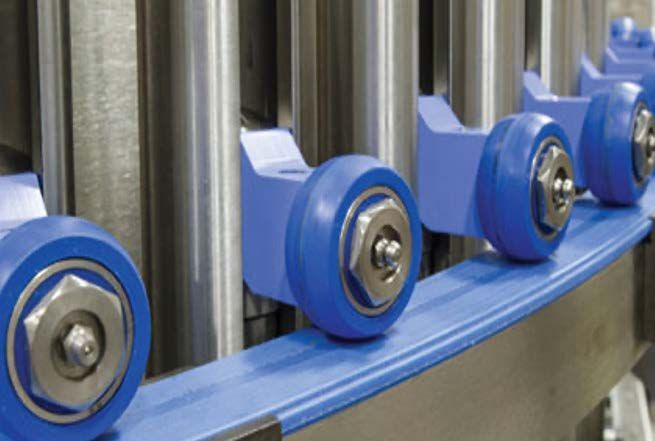Plastic Detectability in Food Processing
Plastic materials are used throughout the processing and conveyance of food. Materials that have direct contact with food are required to meet the strict requirements of the US Food and Drug Administration (FDA) and/or Regulation 10/2011 EU. In addition to compliance, the materials pose a potential issue in terms of foreign body contamination. This refers to pieces of the plastics that can break off and contaminate the food stuff during usage creating a potentially costly situation for the food end user. Plastic particles are of the most prevalent foreign body contaminants due to the fact that plastic is not inherently able to be identified by the typical metal detection or X-Ray detection systems. For that reason, plastic shape manufacturers have developed technologies to increase the detectability of plastics in food processing environments.
Single Detectable
These plastics simply refer to plastics that are blue in color. A vivid blue color is added to the material to make it more visibly detectable in the event it finds its way into the food stuff. Compliant single detectable materials are available in a wide range of thermal and physical properties to meet the requirements of the application.
Dual Detectable
This category of Food Plastics refers to products having both visible blue detectability as well as Metal Detectability. Metal detectors rely on the magnetic or conductive properties of the foreign body contaminant to be detectable and are designed to pick up ferrous, non ferrous and stainless steel contaminants. Metallic filler can be added to the plastic to allow for it to be detectable by traditional metal detectors yet maintain the physical properties and in many cases remain compliant for food contact.
Tri Detectable
This category includes visible and metal detectable, but adds X-Ray detectable to the level of detectability. In order to detect non-metallic contamination, such as ceramic, bone, glass or stone, food processors utilize x-ray detection systems to screen for foreign body contamination. X-Ray detectors are commonly used in food processing and rely on density difference between the foodstuff and the foreign body contaminant to detect the particle. Plastics have been developed that offer enough deviation from the typical density found in food (usually a specific gravity of 1.0 such as that of water) that they are detectable by X-Ray technology used to detect other foreign contaminants. One cannot assume that an MD food grade plastic is also X-Ray detectable. Tri-detectable materials are perfect for companies that use one detection technology on one line and another technology on another line. Tri Detectable materials use a hybrid of technologies such as metallic additives and high density additives to achieve detectability while maintaining compliance.
All Rights Reserved | Laird Plastics Toronto




